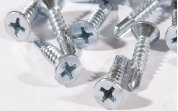Effective Strategies for Using Self-Drilling Drywall Anchors to Secure Heavy Items in Walls
Understanding Self-Drilling Drywall Anchors A Comprehensive Guide
When it comes to hanging items on drywall, the right anchors are crucial for ensuring stability and safety. Among the various types of anchors available, self-drilling drywall anchors have gained popularity among both DIY enthusiasts and professional contractors. This article will explore what self-drilling drywall anchors are, how they work, their advantages, and how to install them effectively.
What Are Self-Drilling Drywall Anchors?
Self-drilling drywall anchors, often referred to as “self-tapping” anchors, are specialized fasteners designed to secure items to drywall without the need for pre-drilling holes. These anchors come with a sharp, pointed end that enables them to penetrate the drywall effortlessly. They are usually made of metal or plastic and feature a unique design that allows them to expand behind the drywall as they are screwed in, creating a secure hold.
How Do They Work?
The installation process for self-drilling drywall anchors is straightforward. To begin, you select the appropriate size anchor based on the weight of the item you intend to hang. Light-duty self-drilling anchors can typically hold 20 to 30 pounds, while heavier-duty models can support up to 50 pounds or more.
1. Mark the Spot Identify and mark the desired location on the wall where you wish to hang your item.
2. Screw It In Directly place the self-drilling anchor at the marked spot. Using a screwdriver or a drill, turn the anchor clockwise. The sharp tip of the anchor will penetrate the drywall, and as you continue to turn, the anchor will expand behind the wall, creating a secure grip.
3. Attach Your Item Once the anchor is securely in place, simply insert the screw into the anchor and attach your desired item.
Advantages of Self-Drilling Drywall Anchors
Self-drilling drywall anchors offer several benefits that make them an appealing choice for many projects
self drilling drywall anchors

- Ease of Use As the name suggests, self-drilling anchors eliminate the need for pre-drilling holes, saving time and effort
. This user-friendly aspect makes them ideal for novice DIYers.- Strong Hold When installed correctly, these anchors distribute weight evenly across a larger area of the drywall, providing a robust hold for various fixtures and decorations.
- Versatility Self-drilling anchors can be used for a wide range of applications—from hanging pictures and shelves to mounting heavier items such as televisions or cabinets.
- Quick Installation Unlike traditional wall anchors that require different tools and steps, self-drilling anchors streamline the process, allowing you to complete projects more quickly.
Tips for Successful Installation
To ensure the best results with self-drilling drywall anchors, keep the following tips in mind
- Choose the Right Anchor Select an anchor designed for the weight of your specific item. Always refer to the packaging for weight limits.
- Use the Right Tools While self-drilling anchors can be installed by hand, using a power drill can make the process easier and faster.
- Angle the Screw If you are installing heavier items, consider using two anchors spaced properly to distribute the load better.
- Avoid Studs Make sure to install the anchors in places where there are no wooden studs behind the drywall, as this can cause the anchors not to work effectively.
In conclusion, self-drilling drywall anchors are an invaluable tool for anyone looking to securely hang items on drywall. Their ease of installation, strong hold, and versatility make them a favorite among both DIYers and professionals. With the right choice of anchors and a little know-how, you can tackle any project with confidence, transforming your walls into functional and decorated spaces.
-
Weatherproof Plastic Expansion Anchors for Outdoorସମ୍ବାଦJun.06,2025
-
Sustainability in the Supply Chain: Eco-Friendly TEK Screws Productionସମ୍ବାଦJun.06,2025
-
Load-Bearing Capacity of External Insulation Fixingsସମ୍ବାଦJun.06,2025
-
Double Head Bolts: Enhancing Efficiency in Industrial Machineryସମ୍ବାଦJun.06,2025
-
Corrosion Resistance in Chipboard Screws: Coatings for Wholesale Durabilityସମ୍ବାଦJun.06,2025
-
Butterfly Toggle Bolts : Enhancing Structural Resilienceସମ୍ବାଦJun.06,2025
